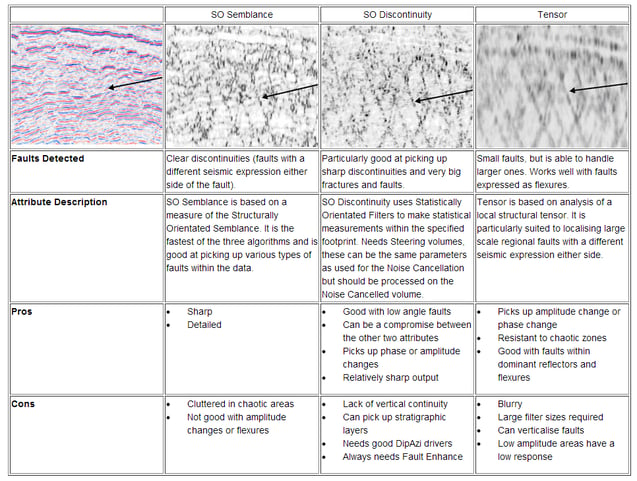In order to extract faults from seismic data, an attribute or a series of attributes must reflect at least one seismic expression of a fault. The expression of a fault can vary significantly from amplitude variations to subtle discontinuities, flexures and sharp discontinuities. Identification of these expressions through varying edge detection attributes results in a better fault extraction.
The data set in this example is located in the Exmouth Sub-Basin, offshore NW Australia. The structural complexity compounds an already difficult stratigraphic play and observed a history of repeated extension punctuated with compression to produce an array of normal and inversion structures.
Structurally Oriented Semblance is the fastest of the three algorithms and is very good at picking up various types of faults within the data: large scale versus small scale. Faults with a different seismic expression either side of the fault can be detected with this algorithm.
SO Discontinuity is sensitive to both amplitude and phase variations.The Structurally Oriented filter makes statistical variability measurements within a specific footprint. It does this by calculating the variance of the Noise Cancelled volume and the Standard Deviation within the footprint, and combines them. It is particularly good at detecting sharp discontinuities and low angle faults.
The Tensor attribute is based on a local structural tensor which is analysed to find the dominant direction of the reflectors and their structure. Tensor images faults that are expressed with Flexure particularly well as well as small scale faults.
Overview:






